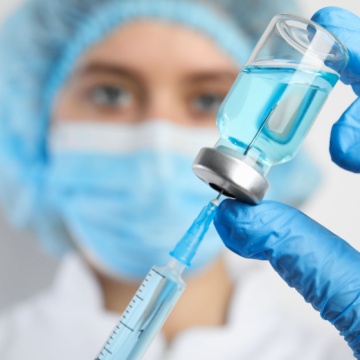Cold-chain logistics is a complex process where every degree counts. This is particularly true for the storage and transportation of pharmaceutical products including vaccines. The potency of a vaccine can be compromised by a deviation of just a few degrees. Whether the doses are being stored in a metropolitan distribution hub or are transported from a manufacturer to a remote clinic in regional Australia, precision in temperature control and monitoring is critical to delivering each vial to patients in perfect condition.
A small margin of error can be tolerated in most logistics contexts. However, when it comes to vaccine monitoring, it is not sufficient to be almost accurate. For example, if a vaccine is supposed to be stored at 2°C to 8°C, its chemical stability could be compromised even if it briefly warms to 12°C.
When exposed to temperatures outside their recommended storage range, all vaccines tend to degrade. The chemical structure of vaccines can alter even by brief exposure to higher or lower temperatures. If compromised vaccines are administered to patients, the consequences could include potential side effects, reduced immunity, and diminished confidence in vaccination programs.
The Cold Chain Challenge
Maintaining the right standards throughout the journey of a vaccine involves a temperature-controlled supply chain covering manufacturing, warehousing, distribution, and last-mile delivery. In this cold-chain, there can be several risk factors such as
- Weather or customs checks leading to transportation delays
- Malfunctioning of refrigerated trucks or malfunctioning freezers.
- Human error during storage, loading, or handling.
To ensure that vaccines remain within safe limits from origin to destination in this high-stakes environment, there is no better alternative compared to precision temperature monitoring.
Monitoring Tools
Many modern-day temperature monitoring systems are designed to detect and record even the slightest deviations. Some of these include data loggers, single-use and multi-use indicators, and real-time trackers.
Popular ShockWatch products such as WarmMark® or ColdMark® offer a clear visual cue whenever the temperature goes below or above acceptable limits. These two products are used extensively in remote areas where sophisticated monitoring infrastructure may not be available.
For more advanced applications, it is possible to generate detailed temperature profiles over time using digital data loggers. This data can be extremely useful for verifying product integrity, investigating potential breaches in cold-chain protocols, and conducting audits.
These tools can also bring accountability in vaccine distribution. Each alert and reading serves as evidence that adequate measures were taken to preserve product quality.
Regulatory Compliance and Global Standards
The critical nature of precision in temperature monitoring is recognized by governments and health agencies across the globe. Strict requirements have been set for vaccine storage and transport by the Therapeutic Goods Administration (TGA), World Health Organization (WHO), and other regulatory bodies.
All these regulations require
- Continuous monitoring of temperature during transport
- Immediate corrective action in case of deviations
- Calibration and validation of monitoring equipment
- Ensuring traceability by detailed record keeping.
Final Thoughts
Precision isn’t just a technical metric for vaccine distribution, a safeguard for resources, lives, and trust. When temperature monitoring is accurate and reliable at every stage of the cold chain, vaccines arrive safe, potent, and ready to protect users.


